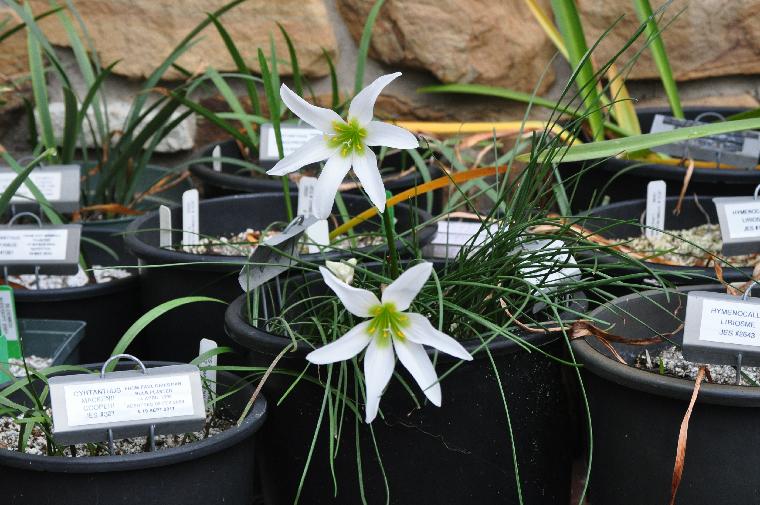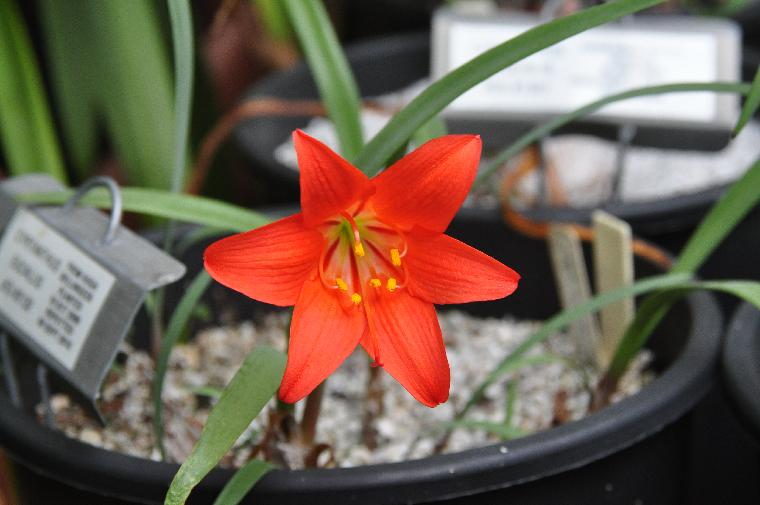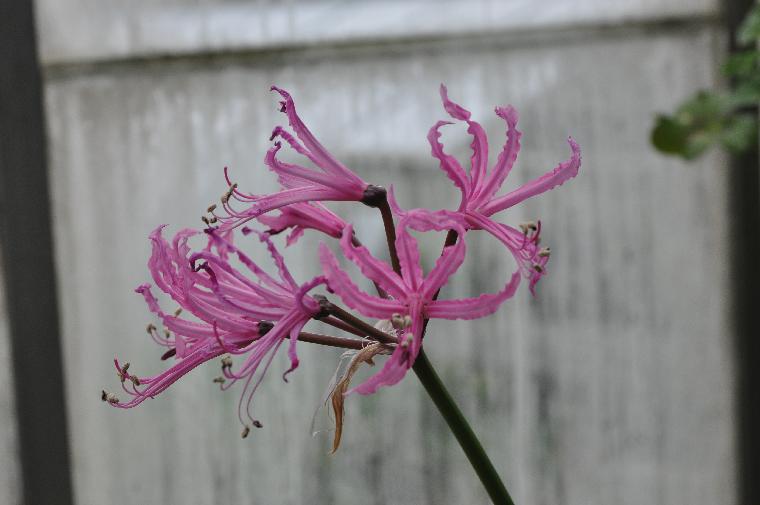Zephyranthes atamasco
This large-flowered rain lily is native to the Southeast of the U.S.A. This pot is blooming out of season in the greenhouse, as they usually bloom early in the spring in the greenhouse.

Zephyranthes atamasco
There are other white-flowered rain lilies native to the southeastern U.S.A. One of them is Z. simpsonii, which I also have. Z. atamasco is probably the hardiest rain lily, since its range extends as far north as parts of North Carolina. I have not heard of any rain lily surviving outdoors in the ground over a winter as far north as Indiana. Pity, as I think they would look very nice blooming naturalized along country roadsides.
Cyrtanthus sanguineus?
This bulb came to me labelled Cyrtanthus eucallis, but now that it has finally bloomed, it looks much more like Cyrtanthus sanguineus.

Cyrtanthus eucallis or sanguineus?
After checking the descriptions of both species in the booklet, "A Review of the Southern African Species of Cyrtanthus" by C. Reid and R. Allen Dyer, Amer. Plant Life Soc. (1984), I have to conclude that the flower shown is sanguineus. Here is a comparison:
| Species: | Eucallis | Sanguineus |
| Flower | Smaller, not recurved | Larger, recurved |
| Umbel | Up to 6 flowers | Single flower |
According to Reid and Dyer, the two species are closely related. Sanguineus ranges from the Eastern Cape Province north through KwaZulu-Natal into tropical East Africa. Eucallis is restricted to the Barberton district of the former Transvaal, now Mpumalanga Province. Rather than being too upset that I don't actually have eucallis, perhaps I should be happy that perhaps I have a second clone of the self-sterile sanguineus and can now try to produce seeds of this species!
Nerine bowdenii wellsii
Nerine bowdenii wellsii is maybe a subspecies of bowdenii that occurs in the high elevations of bowdenii's range. There are two general populations of bowdenii, as far as I understand the situation. A more or less typical form at moderate elevations in the Eastern Cape Province, and the form wellsii in the high ridges of the Drakensberg Escarpment between the Free State and KwaZulu-Natal provinces. This one is from the high elevations.

Nerine bowdenii wellsii
The form wellsii may not be significantly different from typical bowdenii, as others in fact claim. I wanted high-elevation ecotypes in any case to try to develop cold-hardy varieties. It turned out that bowdenii takes forever and a decade to reach bloom size when grown from seeds in my nursery!
On the Road to Africa
A week from now we will be on our way to Tanzania, in East Africa. I'm not lugging a computer on this trip, so there will be no posts to this blog while we are there. However, I am taking a camera and my iPad along, so we will post to Facebook while travelling. You have to be a Facebook "friend" to see my stuff on Facebook, but I will post some pictures from the trip in this blog after we return home.
On Facebook, I'm James Shields but you will find me as shieldsgardens@facebook.com, if you look hard. There are hundreds or thousands of people called "James Shields" in this world.
While we are gone, I'll try to catch my e-mail every couple of days from the iPad. At home, the house-sitter won't answer our phone, but our 80-pound Husky mix will definitely answer the doorbell!
Good gardening, from here in central Indiana
Jim
<shieldsgardens@gmail.com>
Look up technical terms in the Glossary of Plant Biology